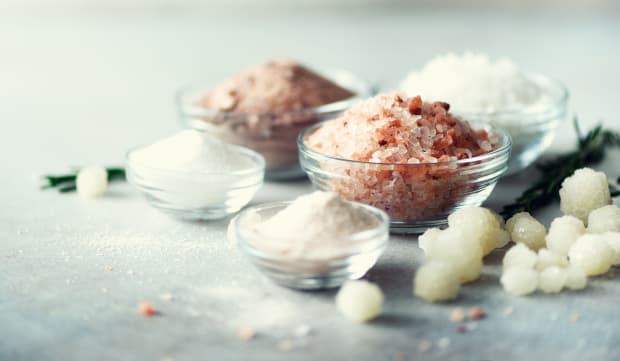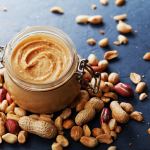- Like
- SHARE
- Digg
- Del
- Tumblr
- VKontakte
- Flattr
- Buffer
- Love This
- Save
- Odnoklassniki
- Meneame
- Blogger
- Amazon
- Yahoo Mail
- Gmail
- AOL
- Newsvine
- HackerNews
- Evernote
- MySpace
- Mail.ru
- Viadeo
- Line
- Comments
- Yummly
- SMS
- Viber
- Telegram
- JOIN
- Skype
- Facebook Messenger
- Kakao
- LiveJournal
- Yammer
- Edgar
- Fintel
- Mix
- Instapaper
- Copy Link
Salt has a bad rap for raising blood pressure and risk for heart disease and stroke, but some studies have questioned the low-salt mantra. For example, the Framingham Offspring Study followed more than 2,600 men and women for 16 years and found that those who consumed less than 2,500 mg of sodium daily had higher blood pressure than those who consumed more.
This flies in the face of limits recommended by the American Heart Association of 2,300 mg of sodium daily, and ideally no more than 1,500 mg daily for most older people. It’s become a muddled issue.
Enter the Salt Sensitivity Study at the University of Virginia in Charlottesville. An NIH-funded research project that’s been going on for the past 10 years, it’s shedding some new light on the salt scene.
The Breakthrough
“A low-salt diet may not be beneficial to everyone and may paradoxically increase blood pressure in some individuals,” says the study’s principal investigator, Robin Felder, PhD. Bottom line: Each of us has a unique sweet spot for salt intake, called a “personal salt index” by the researchers, and your health risks will be lowest if you eat the right amount—not much more or less than your optimum amount.
How likely are you to need more or less salt? Initial testing in the Salt Study has found three categories of reactions to salt:
- Sodium doesn’t affect blood pressure in 72 percent of people, described by researchers as “salt-resistant.”
- A high-sodium diet raises blood pressure in 17 percent of people, described as “salt-sensitive,” and a low-sodium diet will lower their blood pressure.
- For 11 percent of people, described as “inverse salt-sensitive,” a low-sodium diet will actually raise blood pressure. Increasing sodium will lower blood pressure.
Which Type Are You?
There isn’t any medical test to find your personal salt index, but you can do this: eat a low-sodium diet for a week, and then a high-sodium diet for another week and measure your blood pressure along the way. For test purposes, low-sodium is no more than 400 mg daily and high-sodium is 1,800–2,000 mg of sodium daily.
Here are some other clues from Felder: At a football game where people load up on beer and salty hot dogs and snacks at the start, the inverse salt-sensitive will be the first wave of people to go to the bathroom because they quickly eliminate water and salt. The salt-resistant will go later in the game. And the salt-sensitive may not go at all until they get home.
If you eat an unusually salty meal and feel really bloated the next morning or notice a gain of a few pounds on the bathroom scale, it’s water retention. You’re likely salt-sensitive.
How the Right Amount of Salt Keeps You Healthy
Elevated blood pressure readings during the daytime are only one possible sign of too much or too little sodium. Eating the right amount also plays a vital role in repairing arteries while you sleep, helping to prevent atherosclerosis, diabetes, and stroke.
“At night, our blood pressure is programmed genetically to drop about 10 percent and then come back up in the morning,” says Felder. “That 10-percent drop is the time when your body is repairing capillaries.”
By tracking blood pressure while people slept, the Salt Study found that the wrong amount of salt is harmful because it interferes with the normal nighttime drop. “At night,” says Felder, “if you aren’t dipping, you aren’t repairing.”
Sodium Tracking Tips
If you want to try low- and high-sodium diets to see how your body reacts, you need to track your daily sodium intake. Whether you use an app such as MyFitnessPal.com, or track sodium manually, these are some things to keep in mind:
- When eating packaged foods, check the sodium content of each food on the label, multiply the per-serving amount by the number of servings you’re eating, and add it to your daily total.
- For fast food, other restaurant food, or takeout from supermarkets or natural food stores, get the sodium information from the company’s website or in the store or restaurant. This isn’t always available, or it may be difficult to get an accurate count for your serving size. When testing your own sensitivity to salt, it may be best to steer clear of foods without clear sodium labeling for your high- and low-salt test periods.
- When you’re preparing fresh ingredients at home, most of the sodium will come from seasonings, sauces, or marinades. Anything packaged or bottled will list sodium, and you’ll need to precisely measure your serving size to get an accurate count.
When using salt in your kitchen or at the table, here’s how to eyeball sodium amounts in regular table salt or sea salt that has similar consistency:
- 1 tsp.: 2,300 mg (the generally recommended daily maximum for healthy adults)
- ²⁄3 tsp.: 1,500 mg (recommended as a daily maximum by the American Heart Association)
- ½ tsp.: 1,150 mg sodium
- ¼ tsp.: 575 mg sodium
Related: Is Too Much Sodium Hiding In Your Diet?
Coarsely ground salts, such as Kosher salt and some Himalayan and sea salts, are made up of larger crystals. These contain slightly less sodium by volume because when you take a teaspoon of larger crystals, fewer crystals fit on the spoon. Although some salts contain other minerals, these are trace amounts that don’t occupy enough space to significantly change the sodium content. The sodium content of coarse salts should be listed on the package. Here’s an example for Morton Coarse Kosher Salt:
- 1 tsp.: 1,920 mg
- ²⁄3 tsp.: 1,280 mg
- ½ tsp.: 960 mg sodium
- ¼ tsp.: 480 mg sodium
Most people consume about 3,400 mg of sodium daily, mostly from processed food in cans or packages or from restaurant food. Fresh foods generally contain little sodium. For example:
- 3 oz. fresh fish or seafood without added seasoning: Less than 100 mg sodium.
- 3 oz. canned fish or seafood with added salt: Varies, but may range from 300 to 800 mg.
- 3 oz. fresh meat cooked without salt: Less than 100 mg sodium. However, a cheeseburger with condiments or a 3-oz. serving of processed or canned meat can contain more than 1,100 mg sodium.
- Fresh fruit: Ranges from zero to a few milligrams of sodium per piece or typical serving.
- Salad dressings: Oil and vinegar contain no sodium, but sodium content of bottled dressings varies and can be quite high.
- Grains: Without any seasoning or additives, grains contain only a trace of sodium or none; baked foods, cereals, and other packaged grain products vary.
- Fresh vegetables (without any added salt): Milligrams of sodium per cup of most fresh vegetables are in the single or low-double digits. These are some with higher sodium content: beets (131 mg), beet greens (347 mg), and celery (104 mg).
- Nuts: Without any added salt, they contain negligible sodium.
- Condiments and sides: One tablespoon can add significant sodium from soy sauce (914 mg) or teriyaki (689 mg). So can 1 dill pickle (833 mg). Lower-sodium options include (per tablespoon): ketchup (178 mg) or sweet pickle relish (122 mg).


